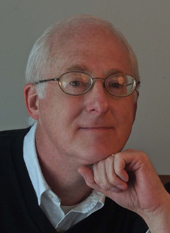|

The Wonder of It All! What Molecular Aesthetics Means For Scientists
My thesis is that there is an integral tetrahedron linking new sciences, new technologies, new media, and new aesthetics such that each enables the others. Viewing the tetrahedron as integral, symbiotic, and transformative alters the usual world view of the scientist, who is generally still trained in a nineteenth century Comteian positivism that has sciences driving progress in all other human endeavors. Few scientists appreciate the many ways in which media and aesthetics inform and make possible their own insights. I shall explore through a set of case studies how aesthetics and media enable new science and technology, thereby defining the nature of the linkers attaching each discipline to the others. I shall focus in particular on four such linkages: 1) the imaginary worlds that a scientist must conceive before testing the nature of perceived existence; 2) the nature of what physicist/philosopher Michael Polanyi has called “personal knowledge”, the intuitive, sensual way in which a scientist comes to know nature before words, equations or graphical representations are possible; 3) technique, which embodies the physical rendering of ideas into experiments and apparatuses; and 4) synosia, a combination of synaesthetic sensual experience with formal intellectual knowledge resulting in a feeling of knowing and knowing feelings. My conclusion is that these linkages can exist only when science, technology, media and aesthetics intersect and combine to co-stimulate each other. The fundamentally important result is the phenomenon of wonder. For in the final analysis, as my colleague Scott Gilbert has recently argued, it is wonder that drives all of us, in every discipline, to explore the nature and meaning of our existence. Molecular aesthetics embodies that wonder in wonderful and wonder-full ways that will produce not only new arts, but also new sciences.
Biographie
Robert Root-Bernstein is a scientist, humanist, and artist. He earned his B.A. in Biochemistry and Ph. D. in History of Science from Princeton University and is currently Professor of Physiology at Michigan State University where he studies the evolution of metabolic control systems, autoimmune diseases, drug development, and the creative process in the sciences and arts. He was a post-doctoral Fellow in Theories of Biology at the Salk Institute for Biological Studies from 1981-83 and a MacArthur Fellow from 1981-1986. He is an editor of LEONARDO, journal of the International Society for the Arts, Sciences and Technology and writes a blog on creativity called Imagine That. He is also currently exhibiting an installation called Origins of Life 1.4 in Vienna together with the transmedia artist Adam Brown. His publications include Discovering (Harvard University Press, 1989) and Sparks of Genius (Houghton Mifflin, 1999).
|

